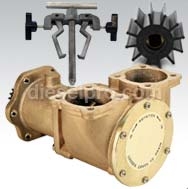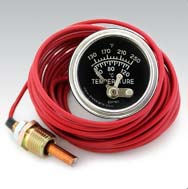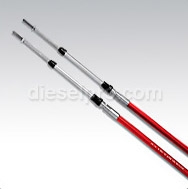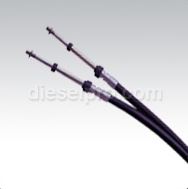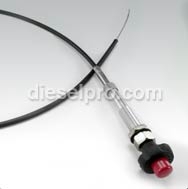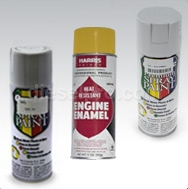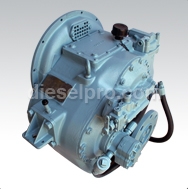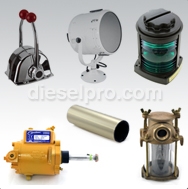The Caterpillar D343 is a powerful, 4-stroke diesel engine designed for industrial and heavy-duty applications where long-term durability and high torque are critical. Introduced in the 1960s, the D343 is an evolution of Caterpillar’s robust inline diesel engine architecture and was produced in both naturally aspirated and turbocharged configurations, including marine variants. With a 6-cylinder inline design and a massive 893 cubic inch (14.6-liter) displacement, the D343 was used extensively in construction machinery, generator sets, oilfield equipment, and large stationary platforms. It’s closely related to the earlier D336, but offers significantly more horsepower and torque—especially in its turbocharged variants. Despite being a pre-emissions, mechanical engine, the D343 remains in use today in legacy fleets, restored equipment, and remote installations, especially where electronic controls and Tier 4 compliance are not required. Its rugged cast iron block, direct injection fuel system, and heavy-duty design have helped cement its reputation as a reliable workhorse. Specification Details Engine Configuration Inline 6-cylinder, 4-stroke diesel Displacement 893 cubic inches (14.6 liters) Bore x Stroke 5.75 in x 7.0 in (146 mm x 178 mm) Aspiration Naturally Aspirated or Turbocharged Compression Ratio ~15.5:1 (varies by version) Fuel System Mechanical Direct Injection Horsepower Rating 325 – 460 HP @ 1,800 – 2,100 RPM Torque Output Approx. 1,050 – 1,400 lb-ft Emissions Standard Pre-regulation (no aftertreatment systems) Cooling System Water-cooled, belt-driven pump Dry Weight ~5,000 – 5,500 lbs (2,270 – 2,500 kg) Oil Capacity 10 – 12 gallons (38 – 45 liters) Flywheel Housing SAE #1 or #2 (application specific) Starting System Electric Start or Pony Motor (on older units) The Caterpillar D343 was built to provide high continuous horsepower and torque, making it ideal for heavy-duty equipment in construction, mining, drilling, marine, and power generation environments. Its simple mechanical design made it easy to maintain in remote and challenging operating conditions. One of the D343's primary applications was in large Caterpillar earthmoving machines, where it powered some of the most demanding equipment of its time. Caterpillar scrapers and motor graders Large track-type tractors (e.g., early D8, D9 models) Wheel loaders and off-highway trucks Heavy-duty cranes and lift equipment Pull-behind rippers and land development equipment Its high torque output made it well-suited for traction-intensive operations, such as rock excavation, foundation trenching, and large-scale grading. The D343 served as a prime mover for generator sets, especially in areas requiring reliable continuous-duty performance without the complexity of electronic systems. Remote mining camps and oilfield base stations Industrial power for plants and compressor stations Municipal water and wastewater facilities Off-grid electrical systems for isolated regions Emergency backup systems for large buildings and data centers Its stable RPM under load and mechanical fuel system enabled it to handle steady or variable power demands with minimal service interruption. In the oil and gas industry, the D343 engine earned a reputation for ruggedness and field reliability, particularly in drilling and well-servicing applications. Mobile drilling rigs and mud pump power units Hydraulic fracturing support engines Skid-mounted generator or compression packages Blowout preventer (BOP) power systems Mechanical winch and hoist systems on well service rigs Its robust construction allowed it to withstand long-term high load conditions, dust, vibration, and harsh climates—common in both domestic and international oilfields. Though not typically used for marine propulsion, the D343 was used extensively in auxiliary and stationary marine systems, as well as general industrial machinery. Marine gensets aboard tugs, dredges, and supply vessels Powering hydraulic systems, including cranes and winches High-volume water pumps for dredging and bilge systems Air compressors, refrigeration units, and industrial fans Stationary conveyor belt engines or material handlers The engine's cooling system could be adapted for either fresh or seawater use, making it flexible for dockside, onboard, and coastal operations. In non-mobile settings, the D343 was favored in systems that needed reliable and powerful mechanical or electrical output, often running for thousands of hours between major service intervals. Cement mixers and aggregate processing plants Large-capacity irrigation and drainage pumps Pulp and paper mill systems High-pressure water or air pump systems Industrial HVAC or process control platforms Its ability to be repaired with basic tools and minimal electronics made it ideal for regions with limited technical support or advanced diagnostic capability. Though discontinued, the D343 remains popular in restoration, repower, and developing-market export scenarios, where newer emissions-regulated engines are cost-prohibitive or less practical. Restored Caterpillar construction and earthmoving machines Rebuilt generator sets for offshore, agricultural, or industrial use Reconditioning and resale for use in Latin America, Africa, or the Middle East Engine swaps in equipment originally powered by 1673, 1693, or D348 engines Marine auxiliary repower for harbor or nearshore fleets These markets value the mechanical reliability, rebuild potential, and spare parts availability of the D343, keeping it relevant even decades after production ended. The Caterpillar D343 represents a time-tested platform built for serious industrial use. Its high torque, generous displacement, and mechanical simplicity make it a favorite among those maintaining legacy fleets or operating in remote, off-grid, or emissions-unregulated environments. Whether powering an earthmoving machine, generator station, or industrial pump, the D343 continues to prove its value where durability and performance matter more than digital systems or modern emissions features. It remains a go-to engine for legacy Cat equipment operators, field technicians, and restoration professionals alike. Marine CAT D343 Coolant System Specific Component Maintenance Life
Parts for Caterpillar D 343
-
Select Parts Category
 Loading...
Loading... Engine Specifications & Applications of the Caterpillar D343 Engine
Overview of the Caterpillar D343
Caterpillar D343 Engine Specifications
Applications of the Caterpillar D343 Engine
1. Heavy Construction Equipment
Construction Use Cases:
2. Power Generation Units
Generator Applications:
3. Oilfield Equipment and Drilling Systems
Oil & Gas Applications:
4. Marine Auxiliary and Industrial Platforms
Auxiliary Use Cases:
5. Stationary Industrial Equipment
Industrial Applications:
6. Repower and Export Markets
Legacy and Repower Applications:
Conclusion
Additional Resources



 Free US Calls: 1-888-433-4735
Free US Calls: 1-888-433-4735 International: 305-545-5588
International: 305-545-5588






